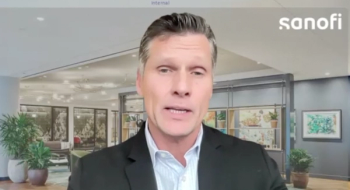
AI 'Bestie' Helps Young Women in South Africa Take Control of HIV Prevention
In this interview, Sarah Morris, chief product officer of Audere, explains why they chose to focus on women and young girls and how they have tailored their program to reach them.
There are approximately 7.5 million people living with HIV in South Africa, making it the largest HIV epidemic globally, according to a
The nonprofit company, Audere, is addressing this gap with their program, Self-Care from Anywhere, which was co-created with local community members and SHOUT-IT-NOW, a South African nonprofit providing youth-focused HIV prevention and sexual health services, serving approximately 1.5 million people in South Africa.
In the driver’s seat is Aimee, a customizable, empathetic, artificial intelligence (AI) companion available via WhatsApp. Aimee links users to sexual health information and HIV counseling. Conversations are monitored by local healthcare providers who can coordinate clinic appointments and provide personalized guidance.
In this interview, Sarah Morris, chief product officer of Audere, explains how AI is being used to support HIV care, how Aimee works and why it’s important to keep humans in the loop.
This interview has been edited for length and clarity.
MHE: How is AI being used to support the HIV response in South Africa?
Morris: The platform that we developed is called Self-Care from Anywhere, and it's delivered through an empathetic, private AI companion called Aimee. SHOUT-IT-NOW has clinicians that monitor a telehealth center, and these young women can get anonymous direct access to the services that they're seeking.
After 18 months of codesigning with young women and young men, we dove into creating a multimodal, AI-powered digital intervention. We really hammered down on the need to empower and build trust by first informing people and by providing insights. Then, you can introduce the intervention.
Our target is women and girls ages 16 to 24 years old, and that's largely driven by where the HIV epidemic is hitting the hardest in South Africa. When we think about adolescent girls and young women, they're especially vulnerable. They face significant risks like stigma and restricted access to services and a disproportionately high HIV prevalence.
MHE: How does Aimee work?
Morris: Aimee takes on three different personas, based on who young women told us they trust. We brought forward a bestie, a big sis and a nurse persona that you can talk to, and they change the way they talk, the emojis they use and the South African slang that they use.
What she's doing is collecting information to understand their vulnerability and guiding them towards HIV self-testing. She knows about them; she remembers what they shared last time she asked them about their life.
MHE: How involved are humans in the Aimee experience?
Morris: We have humans in the loop at two different points. One is the human clinician who’s monitoring and who you can reach out directly to over WhatsApp through the web portal.
Humans in the loop are also reviewing the responses of AI. They are clinicians in South Africa who are trained in the care delivery protocols there, but they're also community members. They can say, ‘Yeah, that was a good response. No, that was a bad response.’
Humans are much better at reading empathy than AI, and AI is better at reading accuracy than humans. You should never let an AI tool loose in the wild because AI tools are not 100% accurate, but humans are not 100% accurate either. We've found in prior studies that together, that partnership is stronger.
MHE: What are the biggest barriers to developing software like Aimee?
Morris: Services like Aimee are on WhatsApp, and they obviously require internet access, so there are limited options on a platform like WhatsApp for providers like us to further reduce the cost of data.
For example, if you're using five different chatbots on your WhatsApp, WhatsApp does not enable each chatbot to zero-rate their own data, so for the provider to take on the cost of the data used for their chatbot, it's basically all WhatsApp data or nothing.
WhatsApp has 97% penetration in South Africa. A lot of youth in South Africa have WhatsApp data packages, but if, for example, you link out to another website, they can't get to that website. You really need to think about what data needs to be right there within WhatsApp so that they can access it.
On the service side, I think it's getting increasingly difficult directing people to the available services amidst stockouts and the reliability of clinics. When we think about the kind of turmoil earlier this year, where everybody was getting stop work orders, there were clinics that would close overnight and have to cancel all their appointments, and then a week later get notified that they can start services again. That makes it hard to plan or physically deliver services that are trusted, safe and peer-led.
MHE: How does Self-Care from Anywhere help healthcare workers?
Morris: A lot of the work we're doing in Self-Care from Anywhere is not just Aimee. There is a full AI suite that helps the healthcare workers have the right context.
Health care workers are working with a dashboard where they can see tasks that have been created for them to reach out to people who might be experiencing self-harm ideation or violence, have an urgent health care need, or are somebody who has tested positive for HIV and should get in for confirmatory testing right away. We're also giving them clinical summaries of what the client talked about with the AI companion, so they have the right context to provide the right care.
If somebody does upload a self-test, we run computer vision over it, which has been shown to be much better than humans at identifying faint lines, making sure we never miss a positive.
There’s also a predictive vulnerability score, which helps prioritize if somebody is highly vulnerable to HIV acquisition. This lets workers know they should maybe spend their limited time today reaching out to them, versus somebody who might already be using condoms regularly and have a good understanding of their own health.
Newsletter
Get the latest industry news, event updates, and more from Managed healthcare Executive.




















































